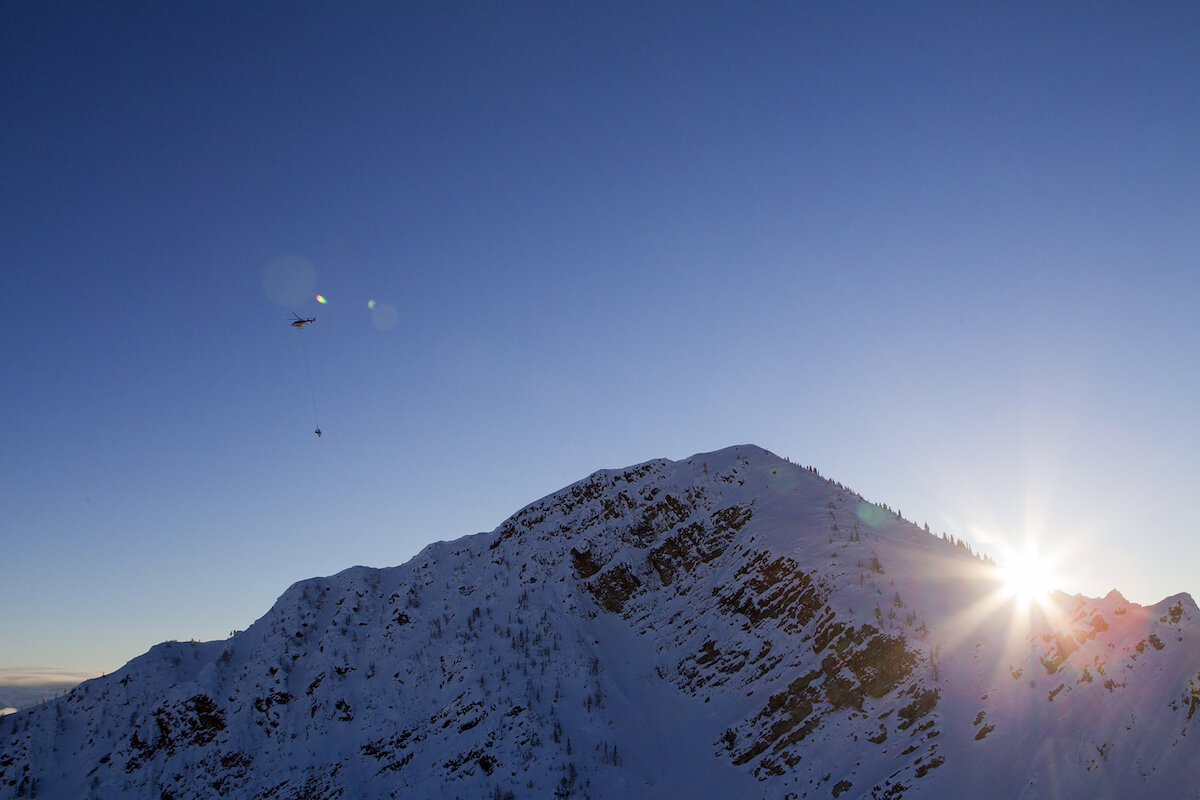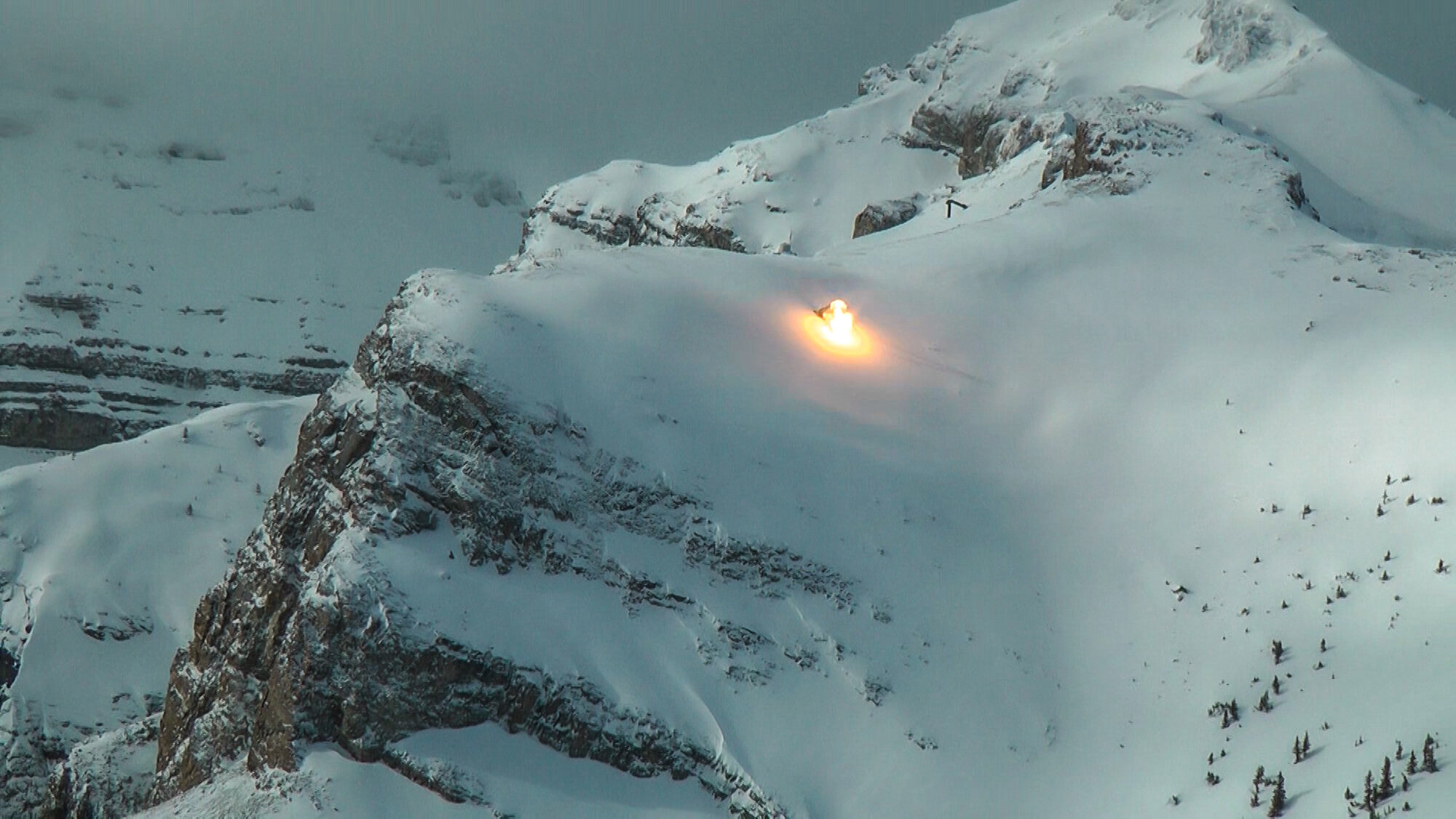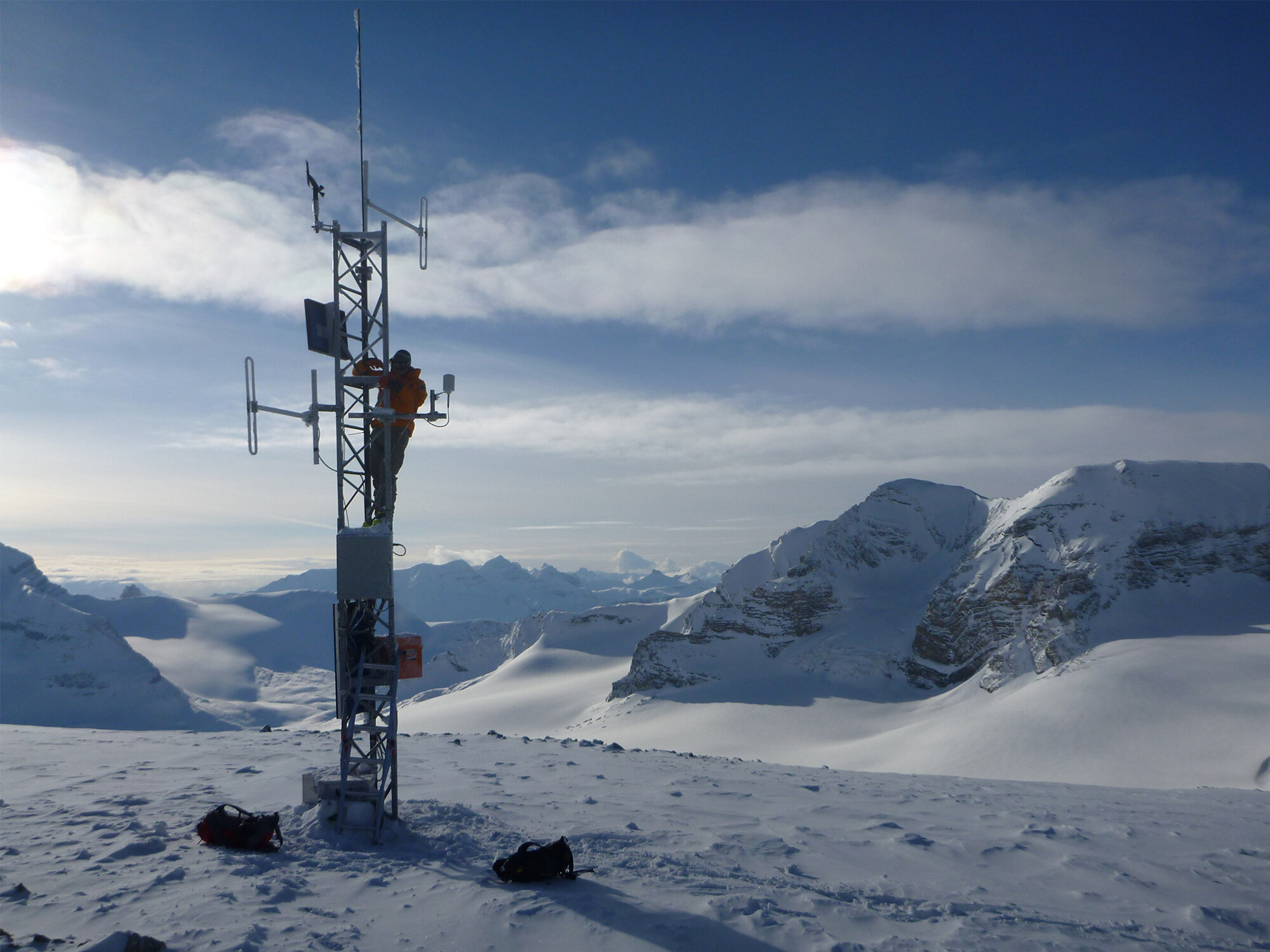WHAT DO AVALANCHE PROFESSIONALS DO IN THE SUMMER?
By Abby Cooper
When wildflowers take over the once snow-covered mountain slopes, avalanche specialists in the Canadian Rockies are far from done their job of keeping us safe. Come summer, many professionals from Avalanche Canada and Parks Canada are still busy with avalanche work. What are they up to when the snow stops flying?
AVALANCHE CANADA PROJECTS
A recent fruit of Avalanche Canada’s summer labours is the online resource, Rescue at Cherry Bowl. Mary Clayton, Avalanche Canada’s Communications Director, oversaw the production of this project as one of her many efforts to develop new ways to educate people on avalanche safety. Rescue at Cherry Bowl is an interactive story that analyzes the choices made by backcountry users. It showcases the human factors behind the decisions made during this real-life incident, as well as the terrain and conditions present at the time of the tragedy. Though a sobering story, its purpose is to teach us where to begin when processing information before, during and after our time in the backcountry, and it provides tools and resources that are essential to staying safe.
Clayton also told us of another project in the works at Avalanche Canada: a computer snowpack modeling program. Ideally, the program will be used to visualize snow profiles remotely from existing weather stations. This implementation would improve the accuracy of avalanche forecasts, especially in remote places. For the public and other professionals, it means more visual detail and area-specific beta in the avalanche bulletins.
On an administrative side, a software update is underway – a three-year project. During the summer months, Avalanche Canada also develops funding strategies and digests feedback submitted from general users, as well as professionals. Many discussions happen to analyze protocol and to improve their already extensive efforts to educate and provide avalanche awareness. Furthermore, a dedicated education team gears up for youth programs in the fall. “Last year we reached over 8,000 kids in Alberta and B.C. through direct delivery,” says Clayton. She goes onto explain that kids are reached through the Avalanche Canada outreach program, at times by Avalanche Canada employees and otherwise through their current school teachers or parents. Online you can access grade-specific material, which is available for teaching in the classroom or at home. This is an excellent effort by Avalanche Canada to educate backcountry users early on.
PARKS CANADA PROJECTS
Parks Canada is responsible for avalanche safety on all roads within the Mountain National Parks. When necessary, Parks Canada does explosive avalanche control on avalanche paths that affect the roads. Brian Webster, a Visitor Safety Specialist, works year-round in the Rockies to make sure that, regardless of the season, all park visitors are as safe as possible. Webster explains that there are many maintenance tasks to perform during the summer months, but not enough to keep their whole avalanche control team employed in this department. Therefore, some of the winter workers enter search and rescue roles in the summer months.
One of the larger summer tasks is taking care of the remote weather station infrastructure. Most of the maintenance is preventative to make sure that all instruments are working properly. On the Sunshine Village Access Road, for instance, there are two large avalanche paths that are controlled by a Gazex system. Gazex is a Remote Avalanche Control System (RACS) that allows forecasters to conduct avalanche control from a remote location. Instead of using a helicopter for bombing or a howitzer (which is used for bombing in Rogers Pass), RACS are permanent structures located in the start zone of the avalanche path. With the click of a button, a Gazex produces an explosion with a spark of propane and oxygen. Given the popularity of the Sunshine Village Access Road, it is important to be able to trigger it regularly and when the road is clear. It is a priority for this location not to rely on weather for a helicopter or visibility from the valley below.
During the summer, the Parks Canada crew stocks the explosives to get them through the winter season and also checks the infrastructure for the RAC systems. The communication used by the RAC and headquarters also undergoes an extensive preventative check-up in preparation for winter.
While duds make up less than 1% of shots fired during the winter (a thorough procedure includes double priming explosives), in the rare chance that an explosive does not detonate, coordinates of the dud are taken and in the summer avalanche technicians will locate the explosive and destroy it. Ideally, a retrial happens in winter, but in an extremely rare case, it may need to happen after the snow melts. Signage is present for summer users around any of the areas frequently bombed in winter. The signs include an image of a dud and a prompt to record their location and call it in as quickly as possible for Parks Canada to take care of.
Avalanche technicians also perform most of the equipment upkeep. Techs also have to keep their explosive tickets up-to-date during the summer. Crews follow a strictly defined series of best practices that get reviewed and they may undergo new training as a result of any new findings. Administrative work includes ordering explosives, fuses and other equipment for the upcoming season, defining any new procures and reviewing existing procedures to better them.
Do your part and fine-tune your avalanche skills so that you can play safe in the mountains. Photo by Abbydell Photography.
YOUR UPKEEP
The team that makes up our Canadian avalanche professionals is an impressive crew driven by a common goal. They want to keep us safe and educate us on how to keep ourselves safe. While detailed and forward-thinking, their efforts are only half the battle; we too need to have the same mindset when stepping foot in the backcountry for ourselves. Furthering our education on avalanche terrain is an on going process – no “one and done” mindsets here. Whether it’s a course refresher, a glacier travel course or a new round of AST courses, it’s important to do your own version of knowledge upkeep during the months leading up to prime backcountry season.
Read More
→ Why You Should Upgrade Your Avalanche Skills: Q+A with Capow’s Marty Schaffer
→ Understanding, Underneath: An Avalanche Survival Story
→ The Seriousness of Slackcountry
A lover of all things outdoors, Abby Cooper is a splitboarder, climber, hiker, adventurer, photographer and writer. She’s living life one adventure to the next with her dog by her side.







